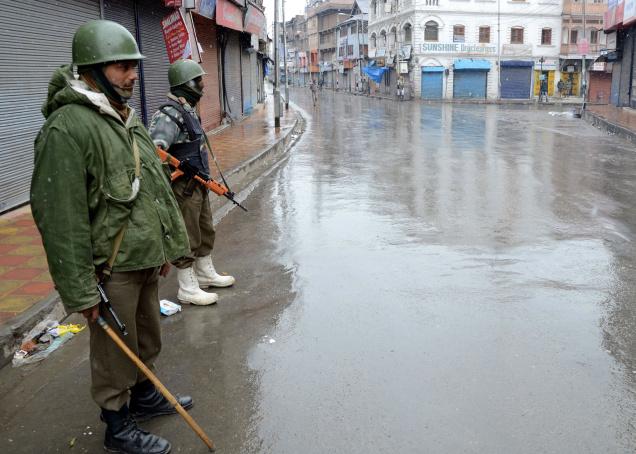INDEPENDENCE DAY MEANS CURFEW, CLAMPDOWNS FOR KASHMIRIS
Independence Day for the Kashmir Valley

NEW DELHI: Independence Day for the Kashmir Valley means curfew, arrests, barbed wire blockades and high security frisking. At a time when the rest of the country is celebrating her independence, the Kashmiris are virtually confined to their homes, with the authorities clamping down to ensure that not a leaf stirs in what becomes a ghost Valley on August 15.
A mindless protocol of ‘security’ is being followed since the years of increased militancy with the authorities going through the same motions regardless of security assessments. The Kashmiri separatists as per their conditioning called for a protest shut down across the Valley, and the authorities in response announced restrictions in different parts even as the separatists were placed under house arrest. The list included as always Syed Ali Shah Geelani, Mirwaiz Umar Farooq, Yasin Malik and Shabir Shah.
The environment in Kashmir is such that if any one of the separatist leaders is not given the same treatment by the state authorities, that is placed under house arrest, rumours that he is working with the government will spread through the Valley like wildfire. There is thus this fairly cosy relationship established in Srinagar in particular where both sides follow a set routine: protest call and then house arrest.
The ordinary Kashmiri does not stir out of his home for fear of interrogation, frisking and harassment by the paramilitary and police forces deployed across the state. Mobile phones are jammed, SMSs banned, and Kashmiris basically cut off from each other and the rest of the country. Sometimes the clampdown is hard, sometimes routine. But the routine as this Independence Day is harsh enough, with families and particularly women and young girls terrified of going out of their homes.
The flag hoisting is thus left to officialdom with the ordinary Kashmir becoming a non-participant. Jammu and Kashmir Chief Minister Omar Abdullah said that militancy related incidents in the state had come down by 80 per cent in the last five and a half years of his tenure. This is a major development but clearly not reflected in the paranoid security bandobast, where all Kashmiris are put on the fringes as the ‘suspects.’
Abdullah also said that schools and hospitals occupied by the security personnel have been vacated. This has been a major issue in the state. Now the chief minister claimed that “1000 private buildings, 300 government buildings, 40 hotels and 30 industrial units have also been cleared from the security forces occupation.”
The chief minister also claimed success of his controversial rehabilitation policy insisting that 35 youth had returned to the state from Pakistan Occupied Kashmir. The Citizen had met several Kashmiri young people in PoK a while ago who had expressed a deep desire to return to their families in Jammu and Kashmir. Abdullah said that the rehabilitation of those who had returned had been undertaken.
He continued to paint a fairly rosy picture of the current situation in the state on the eve of the Assembly elections when he said that 1850 youth had benefited under the Amnesty Policy, and that warrants under the Public Safety Act had been brought down by 50 percent to just 1420 now.



